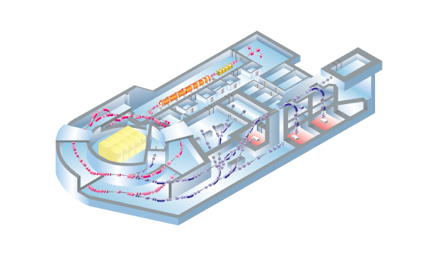- Damage to DNA of genes could give rise to abnormal cell division, metamorphosis, tissue destruction and extinction as well as other consequences.
- A small amount of radiation is strong enough to cut DNA and facilitate variation. Owing to reparability, the original DNA can be restored.
- Intensive radiation kills not only cancer cells but also normal ones.
- If likely to merely target the cancer focus with intensive radiation, the influence caused to normal cells can be reduced while making cancer cells disappear.
Radioactive ray therapy intends to rely upon certain radioactive rays to hinder cancer cells from proliferating and ultimately exterminate cancer focuses. With a view to effectively killing cancer cells and maintaining the functionality of normal cells, it is compelled to tune the amount, division and scope of radiation. Heavy ion ray therapy purports to avoid normal cells from being harmed by radiation through precise location measurement.
When radiated with X-rays, γ-rays or electron rays from the outside of the body, the deeper the cancer focus is situated, the less the amount of radiation becomes. From this perspective, radiation from one direction could put more normal cells situated shallower than the cancer focus at risk. Therefore, radiation technology marked by multi-direction, low dosage and adjacent normal cell protection, for example, intensity-modulated radiation therapy and tomotherapy etc. has been developed.
On the other hand, by means of accelerator-based energy regulation, particle rays are enabled to terminate energy release at the end of the journey, thus merely wiping out cancer cells instead of normal cells.

